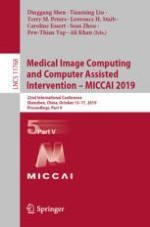2019 | OriginalPaper | Buchkapitel
Learning Where to Look While Tracking Instruments in Robot-Assisted Surgery
verfasst von : Mobarakol Islam, Yueyuan Li, Hongliang Ren
Erschienen in: Medical Image Computing and Computer Assisted Intervention – MICCAI 2019
Aktivieren Sie unsere intelligente Suche, um passende Fachinhalte oder Patente zu finden.
Wählen Sie Textabschnitte aus um mit Künstlicher Intelligenz passenden Patente zu finden. powered by
Markieren Sie Textabschnitte, um KI-gestützt weitere passende Inhalte zu finden. powered by
